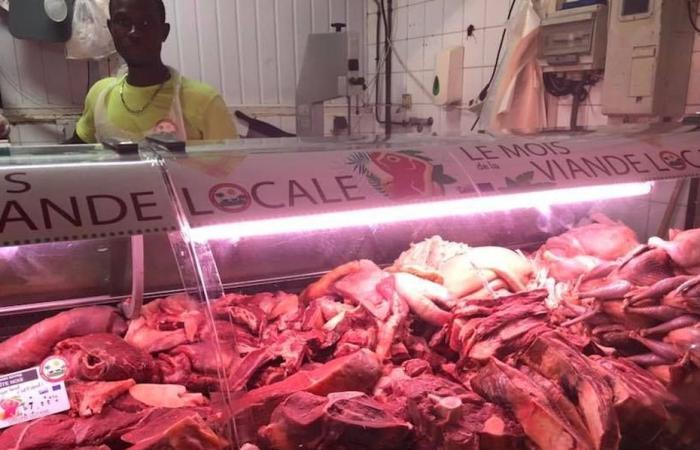Local meat month opens in a context of economic uncertainties for the Guyanese livestock sectors. While nine out of ten consumers say they buy meat, local production is struggling to cover the growing needs of the region and the main herds are in decline.
Like every November, for nine years, the Guyana livestock and meat interprofessional organization (Intervig) has organized its “local meat month”. The event, dedicated this year to Jean Pierre Drelin, a major figure in Guyanese agriculture, who died October 28, seeks to “promote local production to Guyanese consumers”.
Thanks to its open days, “cooking shows”, and other “tasting workshops” organized throughout November throughout the territory, the inter-professional association seeks to “develop sales and increase market shares of local animal products”. There is indeed a lot to be done since, although nine out of ten Guyanese households buy meat, local production is very far from ensuring the territory's food autonomy.
According to the latest Agreste data available to us, dating from 2020, a quarter of the production of beef consumed is of Guyanese origin. This figure drops to 15% for pork and 12.6% for goat meat. And if Guyana is self-sufficient in eggs, only 3% of chickens consumed were raised in Guyana.
Above all, while the Guyanese population increases by 1.7% per year, the local herd has been losing growth for several years. According to Agreste data which is a reference in terms of agricultural statistics, Guyana had 16,195 cattle in 2022 compared to 18,191 in 2018.
Likewise, the number of pigs fell from 4,985 in 2018 to 3,700 in 2022 – with a slight recovery between 2021 and 2022. The two main herds, which had experienced strong growth since the start of the century (the number of cattle doubled between 2002 and 2017) are now struggling to keep up with demand.
However, this is very present since, according to statistics provided by Intervig, recall that 48% of Guyanese say they consume beef while two in five Guyanese consider buying pork regularly.
There are many obstacles to production, whether it is the rising cost of living, and in particular food supplements intended for animals which must be imported, or the lack of infrastructure. In fact, Guyana only has two slaughterhouses, in Rémire Montjoly and Mana, which isolates and increases the production costs of the most distant farms.
The development and structuring of the sector will also not be possible without the support of local consumers. On this subject, Intervig has been carrying out promotion work for years – notably thanks to its “product from Guyana livestock” label – and actions such as this now traditional “Local Meat Month”.
However, advertising may not be enough, because the rise in prices and the general impoverishment of the population, linked to the increase in inequalities, increasingly reduces the ability of households to buy local meat, often of better quality. quality, but on average much more expensive than imported products.






